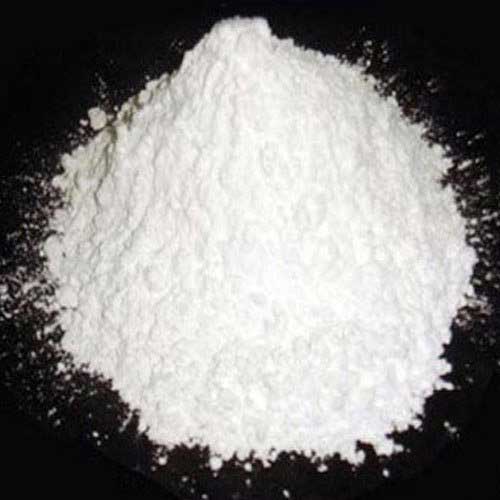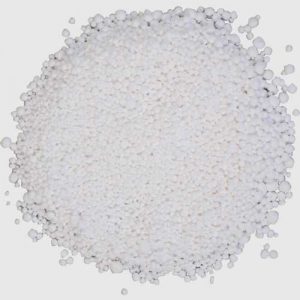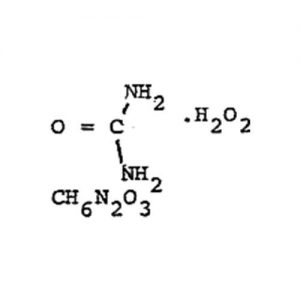- Have any questions?
- 91-22-23726950
- 91-22-23774610

Magnesium Chloride Hexahydrate & Anhydrous
May 7, 2019
Magnesium Stearate
May 7, 2019Magnesium Oxide
Muby Chemicals established in the year 1976, is pioneer in Manufacturing Chemicals for Oil and Gas Exploration, Hydraulic Fracturing (Fracking) and coiled tube Chemicals.Our advanced chemistry leading to an innovative and high-performance product range is coupled with effective on and off site management services.
We are manufacturer of Specialty chemicals, Pharmaceutical Excipients, Fragrance & Flavorchemicals in India, which are of IP, BP, USP, Ph. Eur., FCC or Food Grade, ACS, AR or Analytical Reagent Grade, LR or Laboratory Reagent Grade, Pure and Technical Grades of various chemicals.
High purity Magnesium oxide is produced by the calcination of magnesium carbonate or magnesium hydroxide or by the treatment of magnesium chloride with lime followed by heat. Calcining at different temperatures produces magnesium oxide of different reactivity. High temperatures 1500 – 2000 °C diminish the available surface area and produces dead-burned (often called dead burnt) magnesia, an un-reactive form used as a refractory. Calcining temperatures 1000 – 1500 °C produce hard-burned magnesia which has limited reactivity and calcining at lower temperature, (700-1000 °C) produces light-burned magnesia, a reactive form, also known as caustic calcined magnesia. Although some decomposition of the carbonate to oxide occurs at temperatures below 700 °C, this appears rapidly reversible due to absorption of carbon dioxide from the air.
STARMgO is lightly burned high-purity magnesia that is available for a variety of uses.
STARMgO #150 is a high-active product..
STARMgO P and KS are pharmaceutical-grade products.
STARMgO KS is a granular type. It has good flow-ability and helps to improve productivity.
STARMgO PSF is a fine-powder type of average particle size (1um). It contains less metal elements such as Fe, etc. It has a high purity and whiteness.
| Specifications of Standard Grade of MgO | |
| Item of Quality | STARMgO#150 — EX-STOCK |
| Highly Active RUNNING ITEM | |
| Moisture(%) | 0.5 |
| Loss on Ignition(%) | 6.5 |
| MgO *1(%) | 98.0 |
| CaO(%) | 0.6 |
| Fe(%) | 0.02 |
| Al(%) | 0.01 |
| Acid Insoluble Substances(%) | 0.01 |
| Bulk Density(g/ml) | 0.55 |
| Average Particle Size(um) | 3.5 |
| Specific Surface Area (BET)(m2/g) | 145 |
| Screen Residue (75um)(%) | 0.01 |
*1 Measured after Ignition
We also offer High Purity Magnesium oxide of the Grade HP Series, having consistent stable quality and characteristics.
Apart from that we offer BP grade and FCC food grade MgO.
Packing: Net weights are 25kg, 20kg and 10kg. Products are packed in multilayer bags with a separately sealed polyethylene inner bag.
Heavy Magnesium Oxide BP Grade
Ph Eur
MgOıı40.30ıı1309-48-4
Action and use
Antacid; osmotic laxative.
DEFINITION
Content: 98.0 per cent to 100.5 per cent of MgO (ignited substance).
CHARACTERS
Appearance: Fine, white or almost white powder.
Solubility: Practically insoluble in water. It dissolves in dilute acids with at most slight effervescence.
IDENTIFICATION
A. 15 g has an apparent volume (2.9.15) before settling of not more than 60 ml.
B. Dissolve about 15 mg in 2 ml of dilute nitric acid R and neutralise with dilute sodium hydroxide solution R. The solution gives the reaction of magnesium.
C. Loss on ignition (see Tests).
TESTS
Solution S: Dissolve 5.0 g in a mixture of 30 ml of distilled water and 70 ml of acetic acid, boil for 2 min, cool and dilute to 100 ml with dilute acetic acid. Filter, if necessary, through a previously ignited and tared porcelain or silica filter crucible of suitable porosity to give a clear filtrate.
Appearance of solution: Solution S is not more intensely coloured than reference.
Soluble substances: Maximum 2.0 per cent.
To 2.00 g add 100 ml of water R and boil for 5 min. Filter whilst hot through a sintered-glass filter (40) (2.1.2), allow to cool and dilute to 100 ml with water R. Evaporate 50 ml of the filtrate to dryness and dry at 100-105 °C. The residue weighs a maximum of 20 mg.
Substances insoluble in acetic acid: Maximum 0.1 per cent.
Any residue obtained during the preparation of solution S, washed, dried, and ignited at 600 ±50 °C, weighs a maximum of 5 mg.
Chlorides: Maximum 0.1 per cent.
Sulphates: Maximum 1.0 per cent.
Arsenic: Maximum 4 ppm, determined on 5 ml of solution S.
Calcium: Maximum 1.5 per cent.
Iron: Maximum 0.07 per cent.
Heavy metals: Maximum 30 ppm.
Loss on ignition: Maximum 8.0 per cent, determined on 1.00 g at 900 ± 25 °C.
ASSAY
Dissolve 0.320 g in 20 ml of dilute hydrochloric acid and dilute to 100.0 ml with water. Using 20.0 ml of the solution, carry out the complexometric titration of magnesium. 1 ml of 0.1 M sodium edetate is equivalent to 4.030 mg of MgO.
Light Magnesium Oxide IP
Light Magnesia
MgO —- Mol.Wt.40.30
Category: Antacid, Osmotic Laxative.
Description: Very fine, light, white powder, odourless. 15g occupies a volume of about 150ml.
Solubility: Practically insoluble in water, insoluble in ethanol(95%).It dissolves in dilute acids with at most slight effervescence.
STANDARDS:
Light Magnesium Oxide contains not less than 98.0 per cent and not more than 100.5per cent of MgO, Calculated with reference to the substance ignited at 900°C.
Identification:
Arsenic; Heavy metals; Sulphates; Calcium; Soluble substances; Substances insoluble in acetic acid ; Loss on ignition :Complies with the requirements stated under Heavy Magnesium Oxide using, where appropriate, solution A and residue R prepared as described therein.
Colour of Solution: Prepare Solution A and residue R as described in the test for colour of solution under Heavy Magnesium Carbonate. Solution A is not more than intensely Coloured than reference solution.
Iron: Solution complies with the limit test for iron, Appendix 3.13 (0.1%).
Chloride: 4.0ml of solution A complies with the limit test for chlorides, Appendix 3.10(0.125%)
Magnesium Oxide FCC Food grade
MgO Formula wt 40.30
INS: 530 CAS: [1309-48-4]
DESCRIPTION
Magnesium Oxide occurs as a very bulky, white powder, known as Light Magnesium Oxide or as a relatively dense, white powder known as Heavy Magnesium Oxide. Five grams
of Light Magnesium Oxide occupies a volume of approximately 40 to 50 mL, while 5 g of Heavy Magnesium Oxide occupies a volume of approximately 10 to 20 mL. It is soluble in dilute acids, practically insoluble in water, and insoluble in alcohol.
Function: pH control; neutralizer; anticaking agent; freeflowing agent; firming agent.
REQUIREMENTS
Labeling: Indicate whether it is Light Magnesium Oxide or Heavy Magnesium Oxide.
Identification A solution of sample in 2.7 N hydrochloric acid gives positive tests for Magnesium, Appendix IIIA.
Assay Not less than 96.0% and not more than 100.5% of MgO after ignition.
Acid-Insoluble Substances Not more than 0.1%.
Alkalies (Free) and Soluble Salts Passes test.
Arsenic Not more than 3 mg/kg.
Calcium Oxide Not more than 1.5%.
Lead Not more than 4 mg/kg.
Loss on Ignition Not more than 10.0%.
TESTS
Assay: Ignite about 500 mg of sample to constant weight at 800° _ 25° in a tared platinum crucible, accurately weigh the residue, dissolve it in 30.0 mL of 1 N sulfuric acid, boil gently to remove any carbon dioxide, cool, add methyl orange TS, and titrate the excess acid with 1 N sodium hydroxide. From the volume of 1 N sulfuric acid consumed deduct the volume of 1 N sulfuric acid corresponding to the content of calcium oxide in the sample taken for the assay. The difference is the volume of 1 N sulfuric acid equivalent to the MgO in the sample taken. Each milliliter of 1 N sulfuric acid is equivalent to 20.15 mg of MgO and to 28.04 mg of CaO.
Acid-Insoluble Substances Mix 2.0 g of sample with 75 mL of water, add hydrochloric acid in small portions, with agitation, until no more of the sample dissolves, and boil for 5 min. If an insoluble residue remains, filter it through a suitable tared porous-bottom porcelain crucible, wash well with water until the last washing is free from chloride, ignite at 800° _ 25° for 45 min, cool, and weigh.
Note: Avoid exposing the crucible to sudden temperature changes.
Alkalies (Free) and Soluble Salts Boil 2 g of sample with 100 mL of water for 5 min in a covered beaker, and filter while hot. Add methyl red TS, and titrate 50 mL of the cooled filtrate with 0.1 N sulfuric acid. Not more than 2 mL of the acid is consumed. Evaporate 25 mL of the filtrate to dryness, and dry at 105° for 1 h. Not more than 10 mg of residue remains.
Arsenic Determine as directed under Arsenic Limit Test, Appendix IIIB, using a solution of 1 g of sample in 10 mL of 2.7 N hydrochloric acid.
Calcium Oxide Dissolve about 400 mg of sample, accurately weighed, in a mixture of 3 mL of sulfuric acid and 22 mL of water. Add 50 mL of alcohol, and allow the mixture to stand overnight. If crystals of magnesium sulfate separate, warm the mixture to about 50° to dissolve them. Filter through a suitable tared, porous-bottom porcelain crucible, previously washed with 2 N sulfuric acid, water, and alcohol. Wash the crystals on the porous disk several times with a mixture of 2 volumes of alcohol and 1 volume of 2 N sulfuric acid. Ignite the crucible and contents at 450° _ 25° to constant weight. The weight of calcium sulfate so obtained, multiplied by 0.4119, gives the equivalent of calcium oxide in the sample taken for the test.
Note: Avoid exposing the crucible to sudden temperature changes.
Lead Determine as directed under Lead Limit Test, Appendix IIIB, using a solution of 1 g of sample in 20 mL of 2.7 N hydrochloric acid, and 4 _g of lead (Pb) ion in the control.
Loss on Ignition Transfer about 500 mg of sample, accurately weighed, into a tared, covered, platinum crucible. Ignite at 800° _ 25° for 15 min, cool, and weigh.




